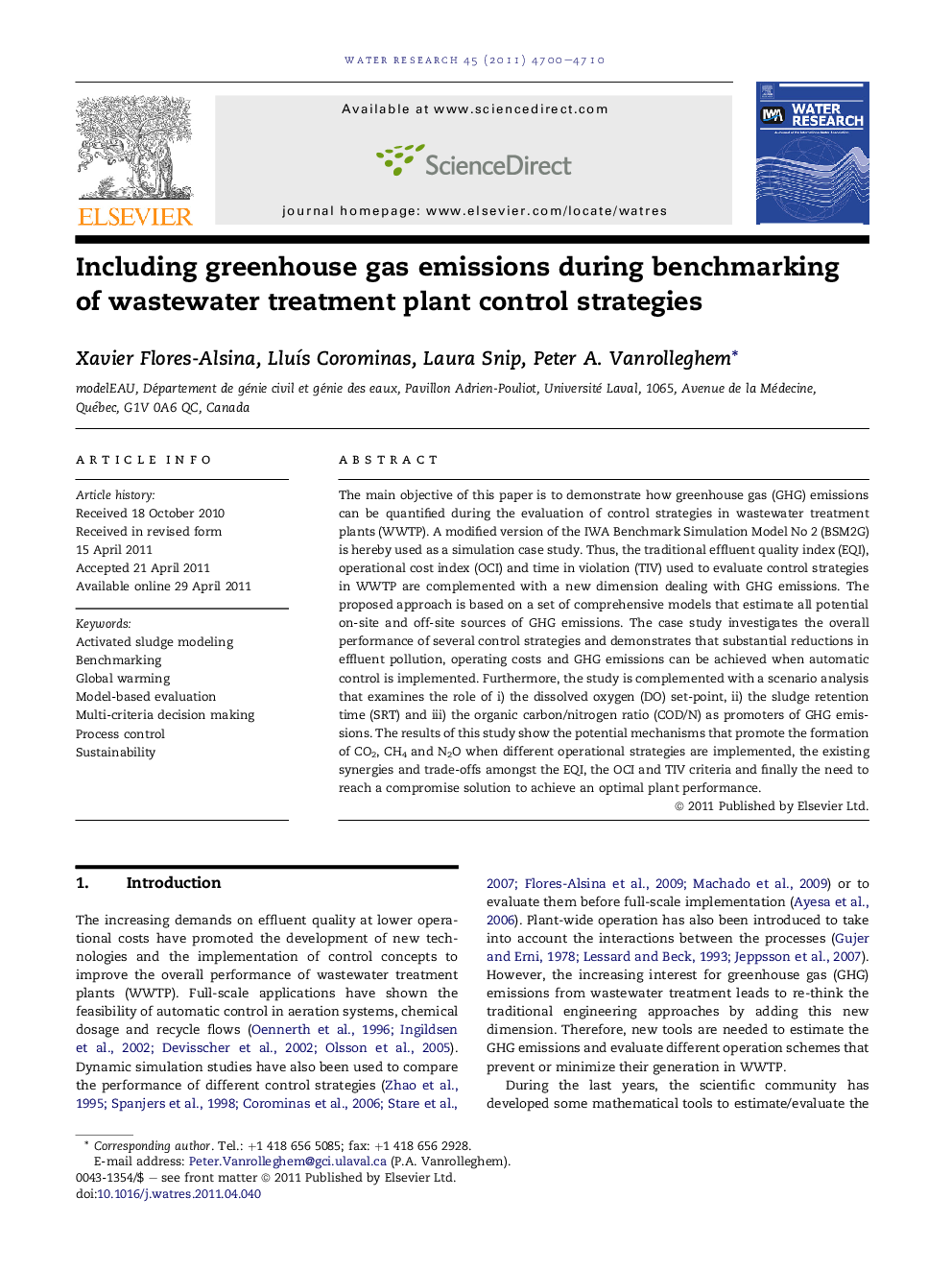| Article ID | Journal | Published Year | Pages | File Type |
|---|---|---|---|---|
| 4483041 | Water Research | 2011 | 11 Pages |
The main objective of this paper is to demonstrate how greenhouse gas (GHG) emissions can be quantified during the evaluation of control strategies in wastewater treatment plants (WWTP). A modified version of the IWA Benchmark Simulation Model No 2 (BSM2G) is hereby used as a simulation case study. Thus, the traditional effluent quality index (EQI), operational cost index (OCI) and time in violation (TIV) used to evaluate control strategies in WWTP are complemented with a new dimension dealing with GHG emissions. The proposed approach is based on a set of comprehensive models that estimate all potential on-site and off-site sources of GHG emissions. The case study investigates the overall performance of several control strategies and demonstrates that substantial reductions in effluent pollution, operating costs and GHG emissions can be achieved when automatic control is implemented. Furthermore, the study is complemented with a scenario analysis that examines the role of i) the dissolved oxygen (DO) set-point, ii) the sludge retention time (SRT) and iii) the organic carbon/nitrogen ratio (COD/N) as promoters of GHG emissions. The results of this study show the potential mechanisms that promote the formation of CO2, CH4 and N2O when different operational strategies are implemented, the existing synergies and trade-offs amongst the EQI, the OCI and TIV criteria and finally the need to reach a compromise solution to achieve an optimal plant performance.
► BSM2G, including GHG emissions, was used to evaluate whole plant performance. ► Evaluation of controllers for effluent quality, operational cost and GHG emissions. ► Compromise aeration and SRT for complete nitrification, low costs and GHG emissions. ► Adding carbon reduces NO3 and N2O emissions, but increases costs and carbon footprint.
